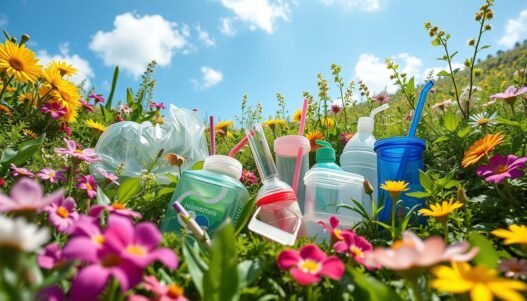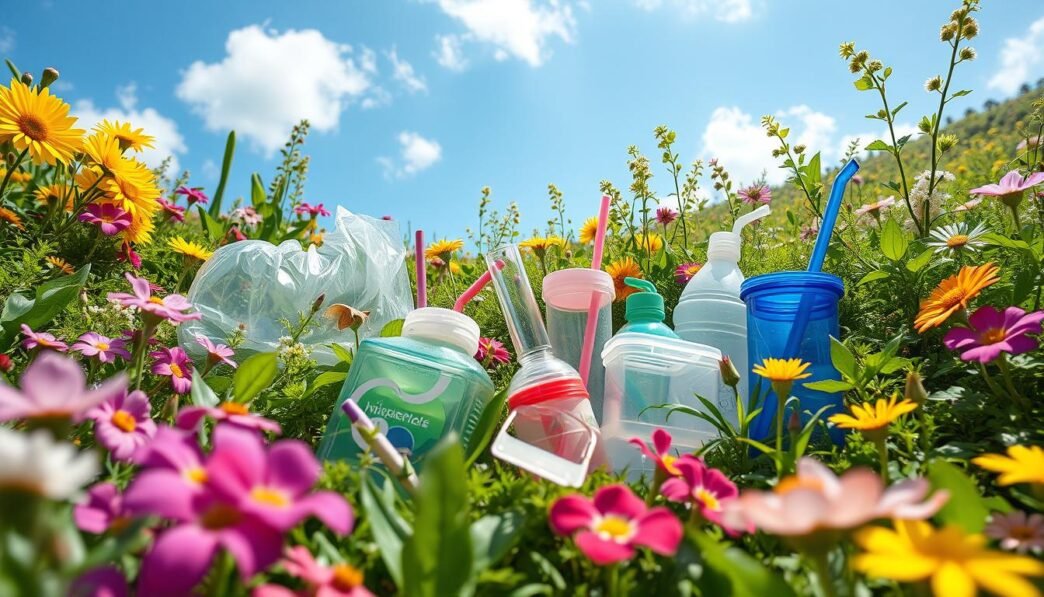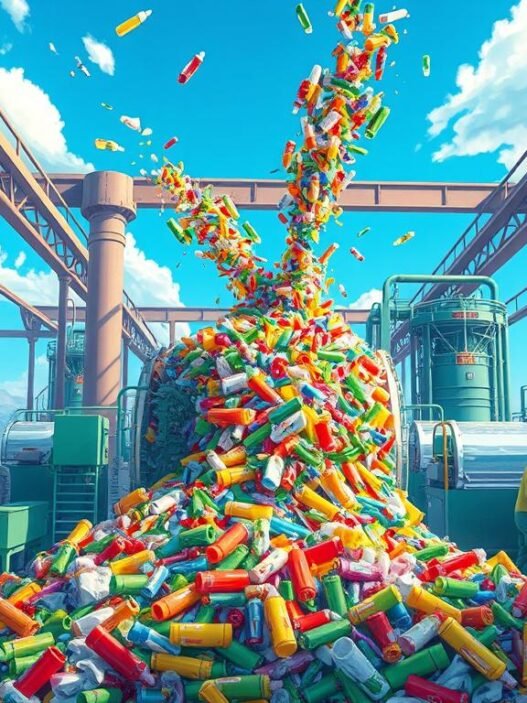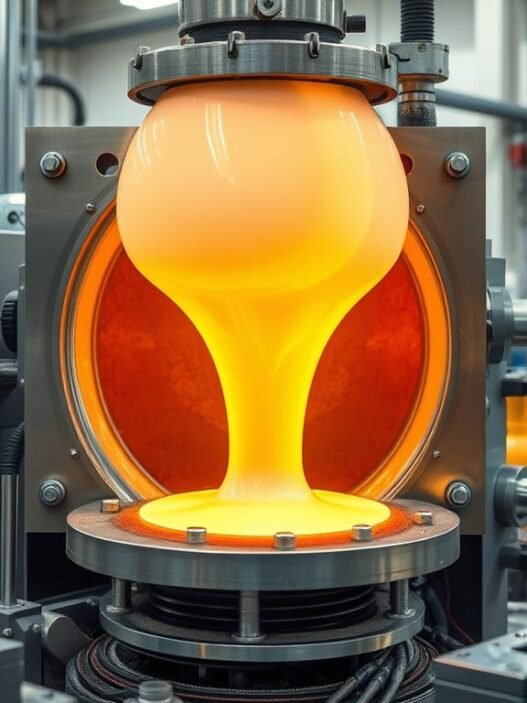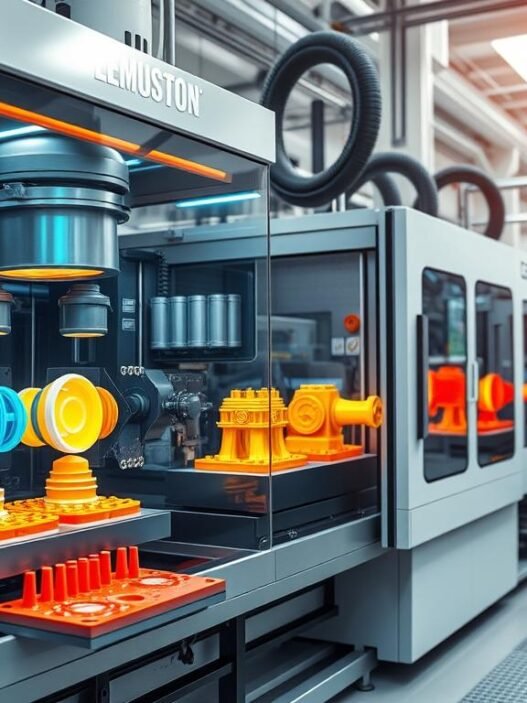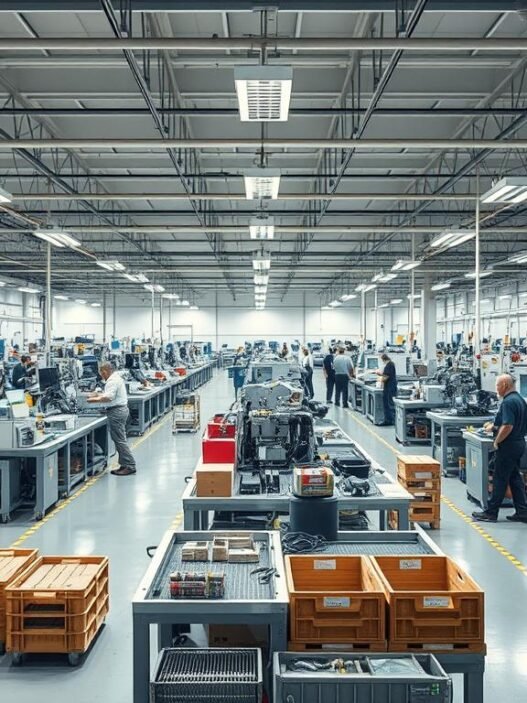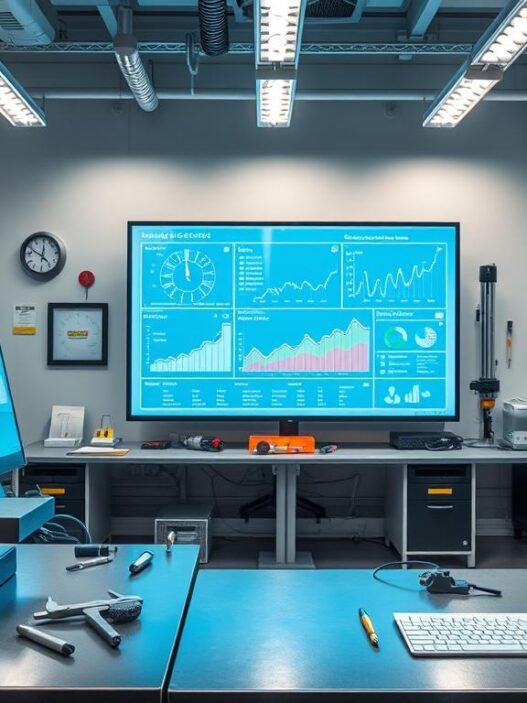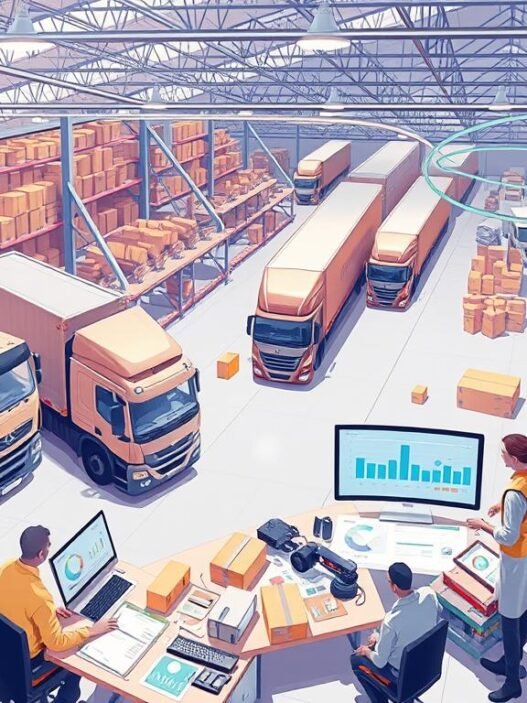In today’s world, we’re all looking for ways to reduce plastic waste. Traditional plastics, made from fossil fuels, don’t break down easily and harm our environment. But, there’s a new hope in the form of biodegradable plastics.
These plastics are made to naturally decompose, which helps lessen our environmental impact. But what are these alternatives, and how do they stack up against regular plastics?
Key Takeaways
- Biodegradable plastics are made from renewable sources and can naturally break down, unlike regular plastics.
- They come in two types: bio-based, from natural sources, and petrochemical-based, made from petroleum.
- Regular plastics lead to problems like relying on fossil fuels, causing carbon emissions, and not breaking down.
- Biodegradable plastics help the environment by reducing waste, improving waste management, and supporting a circular economy.
- New materials like PLA, PHA, and mycelium-based packaging are showing promise as biodegradable options for different uses.
What are Biodegradable Plastics?
Biodegradable plastics are materials that break down into simpler compounds. This happens through the action of tiny living things. They are a green alternative to regular plastics, designed to decompose easily.
They leave behind harmless substances like carbon dioxide and water. Knowing what biodegradable plastics are and how they’re classified helps us understand their uses.
Definition and Classification
ASTM standards say biodegradable plastics can break down naturally. They turn into carbon dioxide, methane, water, and biomass. There are two main types: bio-based biodegradable plastics and petrochemical-based biodegradable plastics.
Bio-based vs Petrochemical-based Biodegradable Plastics
Bio-based plastics come from plants like corn and sugarcane. They’re seen as more eco-friendly because they use renewable resources. On the other hand, petrochemical-based plastics come from fossil fuels.
Many biodegradable plastics mix both types to get the right mix of properties.
“Biodegradable plastics are a promising solution to the growing environmental concerns caused by traditional, non-biodegradable plastics.”
Understanding biodegradable plastics is key to finding new uses for them. It also helps tackle the problem of plastic waste.
Environmental Concerns with Traditional Plastics
Traditional plastics are a big problem for our planet. They are made from oil, which is running out. This process also releases a lot of carbon, making the climate crisis worse.
These plastics don’t break down and end up in landfills, oceans, and nature. This causes pollution and harms ecosystems.
Fossil Fuel Dependence and Carbon Emissions
Crude oil is key in making traditional plastics. This makes the plastics industry a big source of greenhouse gases. In Canada, plastic packaging is a big part of the problem.
Non-biodegradability and Pollution
Traditional plastics don’t break down and harm our environment. Most ocean plastics come from land. In Europe, a lot of plastics are used for packaging.
Plastic waste is everywhere, even in fish and shellfish we eat. This is a huge problem.
Most plastic waste ends up in landfills or nature. In poor countries, the situation is even worse. Plastic waste is not collected and pollutes the environment.
Traditional plastics are a big problem. Most marine litter is plastic. Single-use plastics are especially bad.
This pollution harms ecosystems and can contaminate our food. It’s a serious issue.
Advantages of Biodegradable Plastics
Biodegradable plastics are a new hope for our planet. They are better for the environment than regular plastics. This makes them a great choice for both businesses and people.
Biodegradable plastics are sustainable. They come from plants, not oil. This means we use less oil and help the planet.
These plastics also help the environment a lot. They make less pollution when made. And they break down quickly, unlike regular plastics that take ages.
Another good thing is they can be recycled and reused. This makes them last longer and helps reduce waste. It’s good for the planet.
“Bioplastics produce significantly fewer greenhouse gases over their lifespan compared to conventional plastics.”
More people want products that are good for the planet. Three-quarters of consumers are ready to pay more for them. And two-thirds don’t want products that harm the environment.
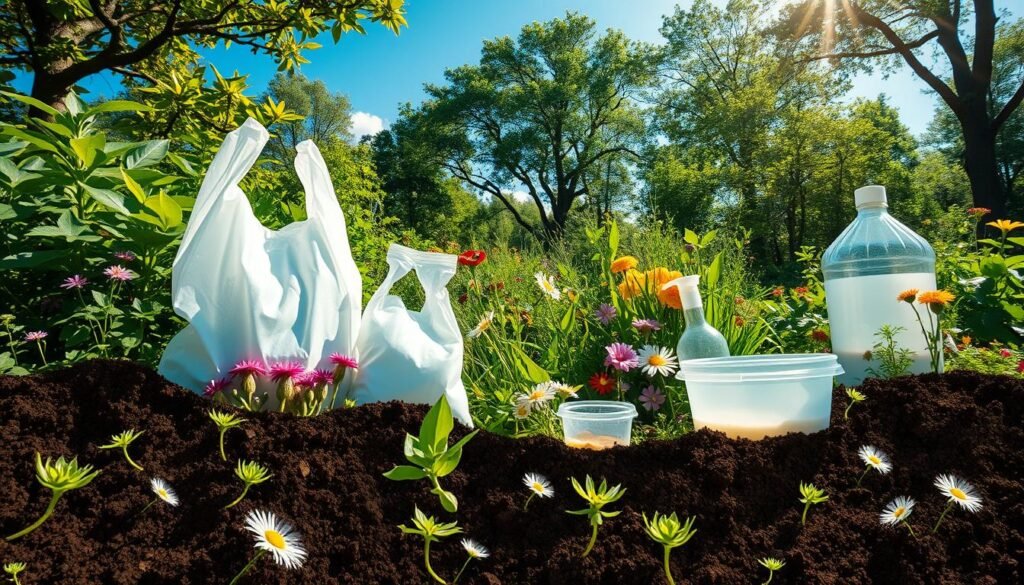
More companies are using biodegradable plastics because of this. They want to be green and meet customer needs. By choosing these plastics, we can all help the planet.
Materials Used for Biodegradable Plastics
Biodegradable plastics come from various materials, including bio-based sources. These options are becoming more popular as people and companies try to lessen the harm caused by regular plastics.
Polylactic Acid (PLA) from Corn
Polylactic acid (PLA) is made from corn and is a key biodegradable plastic. By 2010, it was the second most used bioplastic worldwide. It’s a plant-based material that helps reduce our reliance on fossil fuels and non-degradable plastics.
Polyhydroxyalkanoates (PHA)
Polyhydroxyalkanoates (PHA) is another important material for biodegradable plastics. It’s made by microorganisms or plants and fully breaks down in nature. In fact, ICI UK made PHA at a 70% yield using Alcaligenes latus.
These biodegradable plastics offer green alternatives to traditional plastics. They help lessen the harm caused by plastic waste and the use of fossil fuels. As we seek more sustainable options, bioplastics like PLA and PHA will be key in fighting global plastic pollution.
Applications of Biodegradable Plastics
Biodegradable plastics are used a lot, especially in packaging and food service. They are a green choice instead of regular plastic. You can find them in food containers, utensils, and straws.
Biodegradable Packaging
People are worried about plastic’s harm to the environment. So, biodegradable packaging is getting more popular. Made from things like corn and sugarcane, it’s a better choice than regular plastic. It breaks down easily, helping to keep our planet clean.
Biodegradable Food Service Items
In the food industry, biodegradable plastics are now common. They replace plastic utensils, plates, and containers. These items are safe for food and good for the planet. They help reduce plastic waste.
The use of biodegradable plastics, biodegradable packaging, and biodegradable food service items shows we’re moving towards greener choices. As we all try to be more eco-friendly, these products will keep getting more popular.
Biodegradable Plastics
Biodegradable plastics are seen as a good solution to the problems caused by regular plastics. They use renewable resources and break down naturally. This makes them a better choice for our planet, helping to cut down on waste and pollution.
These plastics can break down quickly when the conditions are right. Up to 98% of plastic made using advanced methods can turn into tiny pieces. Modified polylactic acid (PLA) fibers can even break down in just a week at room temperature. Polycaprolactone (PCL) plastics, on the other hand, can break down in two days with industrial composting.
Adding enzymes to the plastic helps it break down efficiently. These enzymes are spread out at a very small scale. This method also makes it easier to recycle materials, as the plastic breaks down in a way that helps separate it for reuse.
But, there’s a problem with not having clear rules for biodegradable, compostable, and bioplastic products. This makes it hard to manage waste and can lead to false claims. Compostable plastics need special facilities to fully break down, but these facilities are rare in the U.S.
| Material | Degradation Time |
|---|---|
| PLA (Polylactic Acid) | Degrades within a couple of weeks under industrial composting conditions (temperatures above 58°C) |
| PHA (Polyhydroxyalkanoates) | Can biodegrade faster in tropical environments compared to the Arctic or deep sea regions |
| PCL (Polycaprolactone) | Degrades in two days under industrial composting conditions at 40 degrees Celsius |
As bioplastics become more popular, we need to tackle these issues. We must have stricter rules, better waste management, and teach people about these eco-friendly options. This will help make biodegradable plastics a common choice for a greener future.
“The process involving embedding enzymes in plastic allows for nanoscale distribution for efficient degradation.”
Waste Management and Composting
Managing waste and composting are key to the environmental benefits of biodegradable plastics. Some, like polylactic acid (PLA), need special facilities to break down. Others, like polyhydroxyalkanoates (PHA), can decompose naturally, even in home composting systems.
Home Composting vs. Industrial Composting
Home composting is a simple way for people to handle organic waste, including some biodegradable plastics. It takes 6-12 weeks and happens at 50-70°C. Industrial facilities, however, can handle more types of biodegradable materials under controlled conditions.
The European Union has a standard, EN 13432, for compostable products. It ensures they break down into carbon dioxide, water, and biomass within a certain time. This is important because people often confuse “compostable” with “biodegradable,” leading to wrong disposal.
Home composting has its challenges. Some kitchen waste is not good for home systems, and it can produce greenhouse gases. Yet, it’s still a valuable addition to industrial composting, helping to reduce waste fees and provide compost for gardens.
In North America, groups like the American Society for Testing and Materials (ASTM) and the Bureau de Normalisation du Québec (BNQ) have set standards for biodegradable products. The European Union also has standards like EN 13432. But, the standards in composting facilities can vary, affecting how well compostable plastics work.
The waste management sector is still figuring out how to include biodegradable plastics. Despite their growing production, they make up less than 1% of the over 390 million tonnes of plastic made each year. Better labeling, uniform standards, and more infrastructure are needed to ensure these eco-friendly options are disposed of correctly.
Emerging Startups and Innovations
The world of biodegradable plastics is changing fast. New startups are using renewable materials to make better plastics. Companies like Bpacks, Full Cycle, Genecis, Refork, and OMAO are making compostable and biodegradable plastics. They use food waste and other natural ingredients to create items like straws and utensils.
These startups are solving big environmental problems with traditional plastics. They’re also meeting the growing need for eco-friendly packaging. By using renewable resources, they’re helping us move towards a more sustainable economy.
Innovative Biodegradable Plastic Solutions
- Papkot, Ecovia, and TerraSafe Materials are making packaging from mycelium, bioplastic bags, and coffee waste.
- Futuralga, FoodGradePackaging, and others are creating green food packaging.
- Peelon is making biodegradable packaging films to keep produce fresh longer.
- Coffeefrom is turning coffee waste into biodegradable packaging materials.
- EcoPackables is using recycled plastic and paper for packaging.
- HumusPak offers compostable packaging made from cornstarch or vegetable-based plastic.
- Around Tea has vegan pouches from compostable cardboard and soy-based ink.
- THECA is working on molded fiber packaging for protection and shipment.
These startups are leading the way in biodegradable plastics. They show us what a sustainable future for packaging and materials could look like. As the bioplastics market grows, these companies will play a big role in making the industry greener.
“We are at the forefront of a revolution in biodegradable materials, and these startups are leading the charge. Their innovative solutions have the potential to transform the way we produce and consume plastics, paving the way for a more sustainable future.”
Challenges and Future Prospects
Adopting biodegradable plastics is a step towards a greener future. Yet, it faces several hurdles. One major problem is the need for special composting facilities. Without these, biodegradable plastics might end up in landfills, undoing their environmental benefits.
Cost is another challenge. Making biodegradable plastics is more expensive than traditional plastics. This higher cost might slow down their adoption, especially in price-sensitive industries.
There’s also the risk of “greenwashing.” This happens when products are labeled as biodegradable but aren’t. It’s important for consumers and businesses to check these claims carefully.
Despite these obstacles, the outlook for biodegradable plastics is positive. As more people seek sustainable options, and research advances, these plastics will likely become cheaper and better. Governments are also helping by creating policies and incentives.
Working together is key to solving these problems. Everyone from researchers to waste managers needs to collaborate. This way, we can make the plastic economy more sustainable.
| Challenges of Biodegradable Plastics | Future Prospects |
|---|---|
|
|
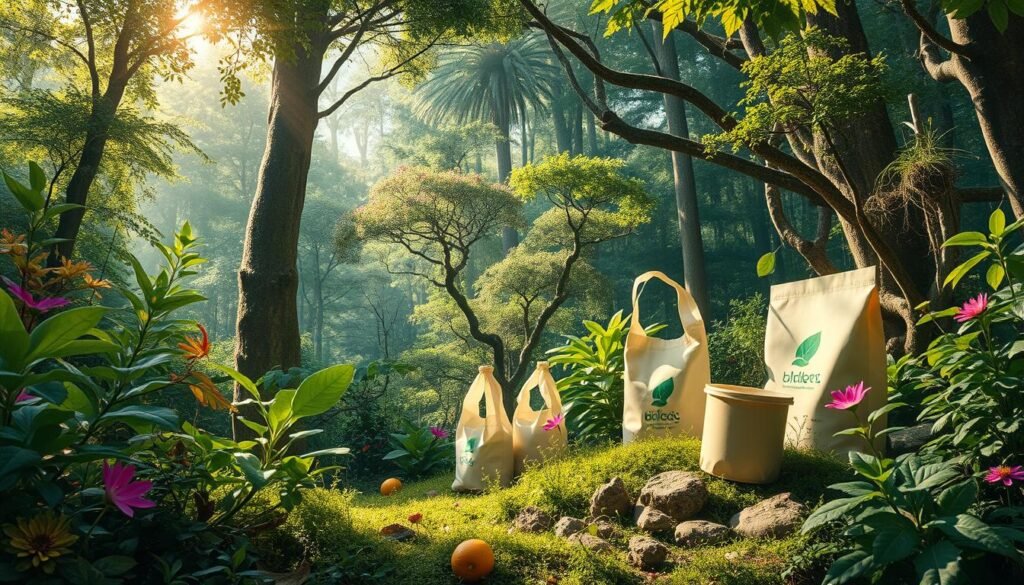
The world needs to tackle the issues with biodegradable plastics to fully benefit from them. With innovation, policy support, and teamwork, we can achieve a more sustainable plastic future.
Conclusion
Biodegradable plastics are a hopeful answer to the problems caused by regular plastics. They use renewable materials and break down naturally. This makes them a greener choice that helps lessen plastic waste and cuts down on carbon emissions.
There are different kinds of biodegradable plastics, like PLA and PHA. They are better at breaking down and work well. As more people want these green plastics, it’s key to look at their cost and how they compare to regular plastics.
The future for biodegradable plastics looks bright. New ways to make them and changes in laws will help them become more common. But, we need to solve problems like how well they work in real life and their higher cost. This will help us move towards a cleaner, more sustainable world.





